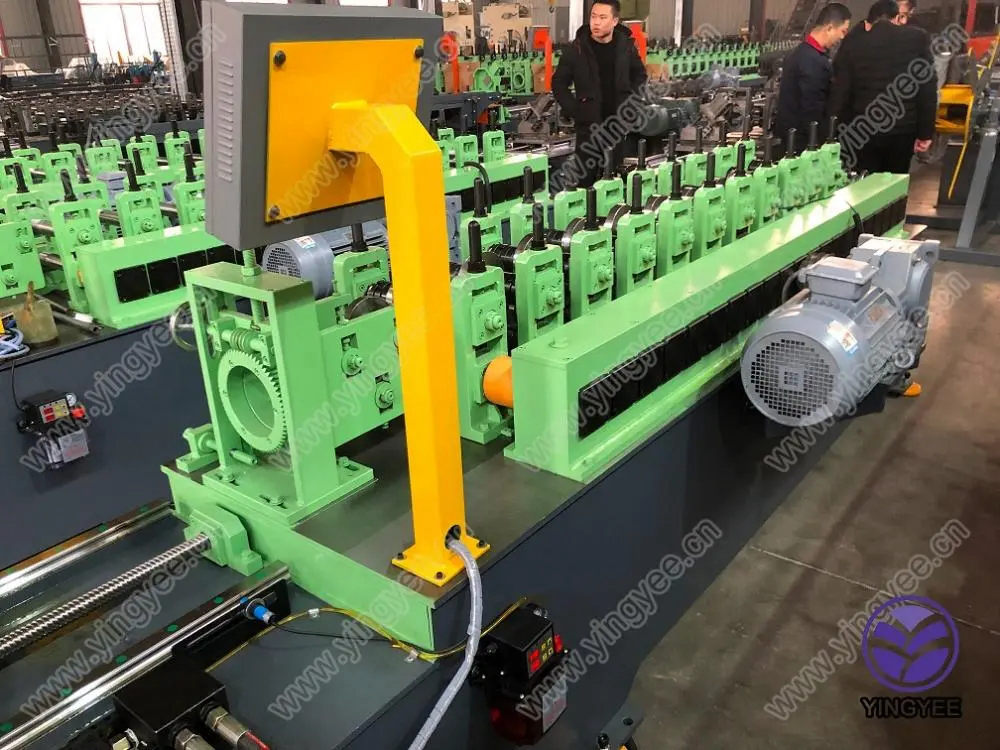
Understanding Steel Deck Roll Forming Machines
In the modern construction industry, efficiency and precision are paramount. One of the tools that have revolutionized metal building processes is the steel deck roll forming machine. These machines are instrumental in producing steel decking, which is widely used in floors and roofs of commercial and industrial buildings. This article delves into the functionality, benefits, and applications of steel deck roll forming machines.
What is a Steel Deck Roll Forming Machine?
A steel deck roll forming machine is a specialized piece of equipment designed to manufacture steel decking profiles from flat steel sheets. The process begins with unwinding a coil of steel, which is then fed into the roll forming machine. Through a series of carefully arranged rollers, the flat sheets are progressively shaped into a specific profile, such as composite or non-composite decking, which enhances structural integrity and spans capabilities.
The production process involves several stages, including feeding, roll forming, cutting to length, and finally, stacking the finished products. The versatility of these machines allows for varying decking profiles, thicknesses, and widths based on project requirements. Advanced models often come equipped with automated controls, enhancing production speed and precision, which significantly reduces labor costs and time.
Benefits of Steel Deck Roll Forming Machines
1. Efficiency Roll forming is a continuous process, meaning that once the initial setup is complete, the machine can produce steel deck profiles at a rapid pace. This efficiency is crucial for meeting tight construction deadlines.
2. Cost-Effectiveness While the initial investment in a roll forming machine may seem high, the long-term savings on labor and material waste make it a worthwhile investment. Moreover, the consistency and quality of the finished products minimize the chances of rework, further saving costs.

3. Customization These machines can be customized to produce various profiles and dimensions, providing builders with the flexibility to meet specific design requirements. This adaptability is essential in an industry where unique projects are commonplace.
4. Sustainability As steel is a highly recyclable material, employing steel decks contributes to sustainable building practices. The process generates less waste compared to traditional construction methods, aligning with the growing emphasis on sustainability in construction.
5. Durability Steel decking produced by these machines is robust and resistant to various environmental factors. This durability ensures the structural integrity of buildings, enhancing their longevity and reducing maintenance costs.
Applications of Steel Decking
Steel decking is utilized across various sectors in construction. It is predominantly employed in commercial buildings, warehouses, and industrial sites due to its high load-bearing capacity and durability. Additionally, steel decks can be used in residential construction, especially in multi-story buildings, providing reliable and efficient flooring solutions.
Another vital application is in bridge construction, where steel decking is essential for ensuring safety and performance under heavy loads. The versatility of steel deck roll forming machines means that they can adapt to the needs of different projects, making them an invaluable asset in the construction industry.
Conclusion
Steel deck roll forming machines play a critical role in modern construction, providing efficiency, cost-effectiveness, and durability in the production of steel decks. As the industry continues to evolve, these machines will remain at the forefront, facilitating innovative building solutions that meet the demands of today’s construction landscape. With their ability to produce tailored decking solutions quickly, they are indispensable in the quest for efficiency and quality in construction projects worldwide.